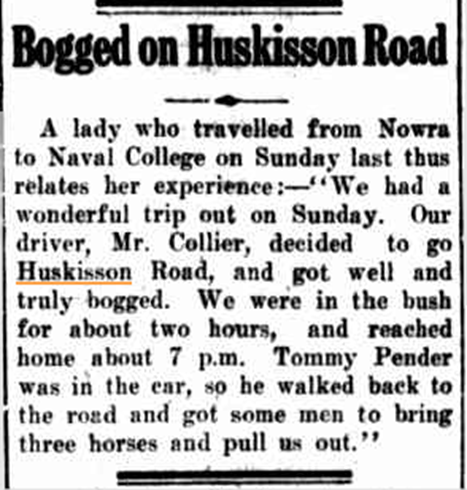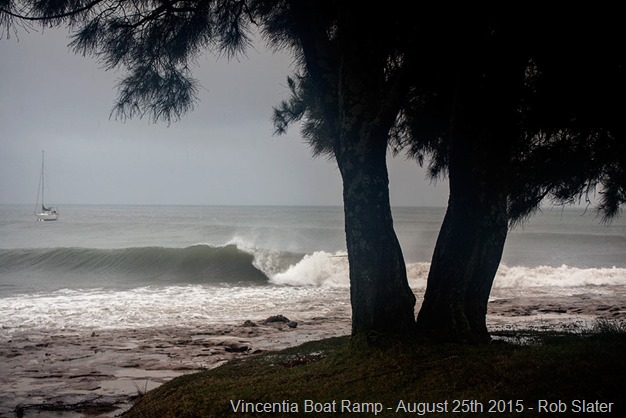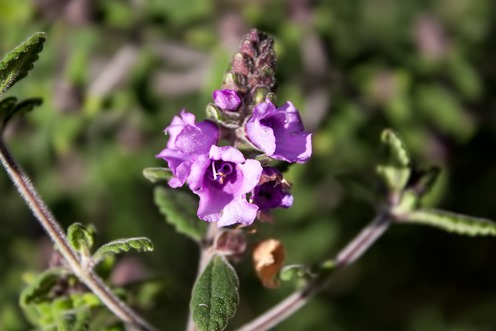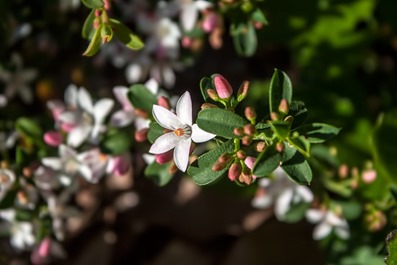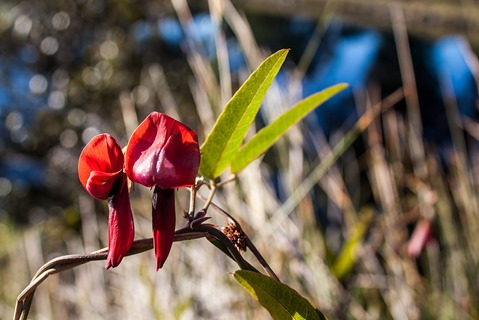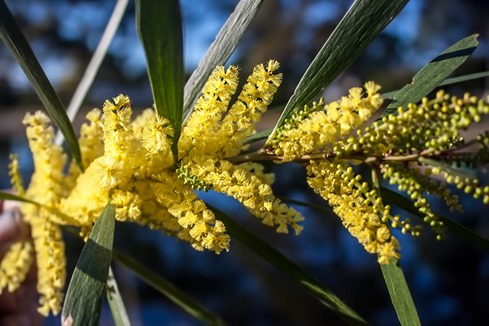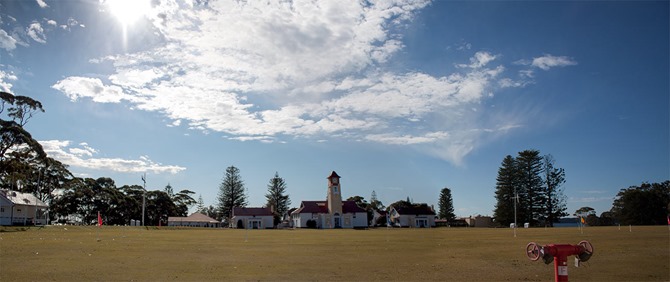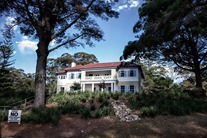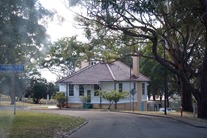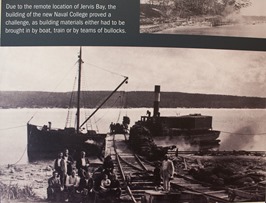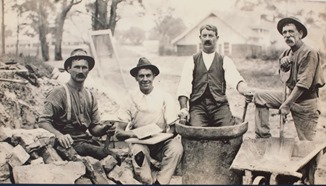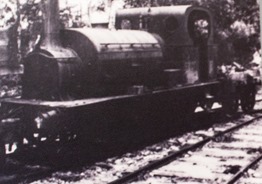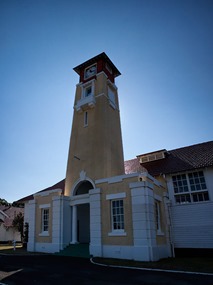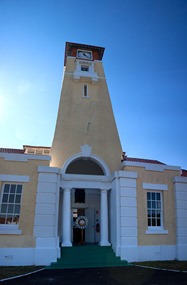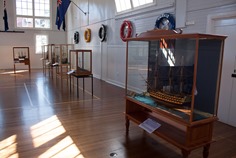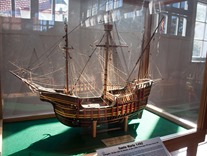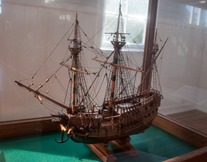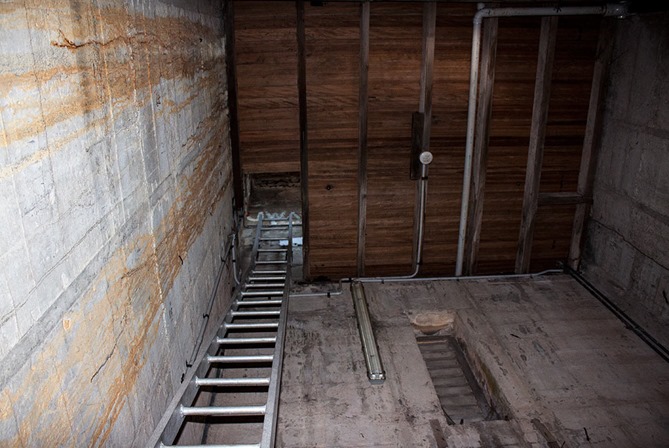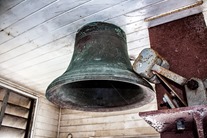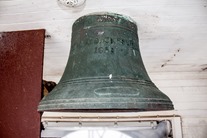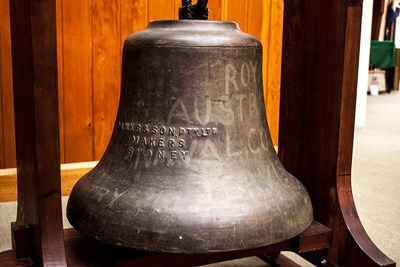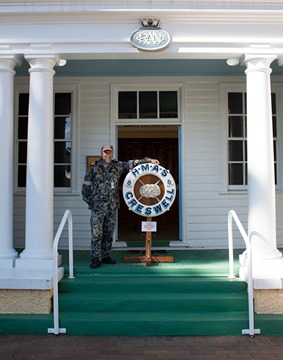 | ||||||||||||||||||||||||||||||||||||
| ||||||||||||||||||||||||||||||||||||
27 August 2015
26 August 2015
1919 – Huskisson, population 200.
 | ||||||
| When these pictures appeared in the Western Mail Perth in 1919 along with a short story about the neglected but beautiful Jervis Bay, there was only around 200 people living at Huskisson, most people were employed in the timber, fishing, and ship-building industry. | ||||||

| ||||||
 | ||||||
| Huskisson was now the only town existing on the shores of the bay, timber was still being cut from the surrounding forests of Wandandian and Tomerong and transported to Huskisson to be loaded onto waiting steamers. Despite having to go further back into the forests and deep gorges to secure the slowly disappearing timber, a new timber mill was built near Huskisson employing the latest technology available for the time. | ||||||
 | ||||||
| Tourism was becoming more important, a look through local papers from the time reveals many stories about how good the fishing and shooting was. | ||||||
| ||||||
| The Dents and other ship-builders were still building wooden ships, steamers and sail, on the banks of Currambene Creek. | ||||||
| Big hopes for the prosperity of the bay". | ||||||
 | ||||||
| By 1919 most of the work had been completed on the college, but right from the beginning there were protests coming from Sydney politicians in opposition to the facility because of the costs associated with training the cadets. | ||||||
 Bullock teams bringing timber for the construction of the Australian Naval College - 1912 Bullock teams bringing timber for the construction of the Australian Naval College - 1912 | ||||||
| The base came under further attacks when a Shoalhaven News report had a story about a meeting being held in Nowra to protest against the proposal by Sydney to convert the the Naval College into a quarantine Station. | ||||||
| But like so many other grand visions, the promised railway was never constructed, no major industries came to the bay, and the bay essentially stayed the same as it had always been, a tranquil beautiful place. | ||||||
|
| ||||||
24 August 2015
On this day - 1904
| Shoalhaven Telegraph. - 24th August 1904. | |||
| George Dent in critical condition after being bitten by snake. | |||
| |||
| From the Popular Science Monthly -1891 | |||
There was a lot of hesitation at the time in accepting what seemed like such a radical treatment, using one poison to combat another, but after so many people recovered completely after being injected with controlled doses of strychnine, it became the recommended treatment. | |||
| This treatment was first suggested by Dr. Mueller of Victoria 1989 |
Wirreecoo Garden’s August flowers
20 August 2015
Jervis Bay – Fishy Tales
19 August 2015
The Steam Ship Dorrigo
| The Launch of the S.S Dorrigo 1901 | |||
| Huskisson in 1901 was a peaceful little community on the shores of Jervis Bay, perched adjacent to the cool, clear running waters of Currambene Creek.  Launch of the S.S Dorrigo, snapped by Dr. Stoney as she entered the water. 9 a.m was the fixed time for the launch from Mr Hardiman’s ship-building yards. The whole of the residents of the bay, together with some from Tomerong and adjoining localities and a coach-load from Nowra, were present to witness the interesting ceremony. The launch took place about a quarter to 9 a.m, it being necessary to take advantage of the full tide. When everything was in readiness the workmen removed the chocks holding the vessel in her cradle, a few turns were given to the screw jack at her stem, the ship was given away, and she slid gracefully and rapidly from the stocks into the waters of Currambene Creek, where she proudly floated, a tribute to the workmanship of the Bay shipwrights and to the enterprise of her owner, Mr G. W Nicoll, of Sydney. A Time honoured custom. Just as the vessel began to move, Mrs Nicoll, wife of the owner, following the time honoured custom, broke a bottle of Champaign across her bows, and christened her the Dorrigo, and wishing her a long and successful career. The launching was greeted with the hearty cheering from the assembled company. Built by H. Hardiman. The S.S Dorrigo is 132ft, long, 24ft, beam and 11ft, depth of hold, and a capacity of 400 tons with machinery and engines. It has a raised quarter-deck, 80 ft long by 20ft high and a forecastle 2ft high by 20 ft long. She will be provided with accommodation for 20 salon and six steerage passengers. Well known local ship-building identity George Dent was foreman, the workmanship reflects the highest credit upon those gentlemen. She is well and faithfully built, of district hardwood, decking of Oregon Pine. While graceful in all her lines. The Dorrigo’s hull is strongly put together, and she should be capable of withstanding more than ordinary heavy weathers. She is intended for the Byron Bay and Northern Rivers trade. Towed to Sydney. After some final fitting at Huskisson, she will be towed to Sydney and be fitted up with her steam engines, machinery and all the prerequisites for modern passenger traffic,, including the installation of electric light. Substantial investment. Building a modern steamer out of timber was a substantial investment for the owners, The Dorrigo had cost somewhere around 2000 ponds already, once she was totally fitted out for her trading purposes, the investment was estimated at to be around 9000 ponds. Largest Vessel built at Huskisson. The Dorrigo at the time of launch, was the largest vessel built at Huskisson, and the forth vessel built by Mr Hardiman, and it is hopped many more such craft would be turned out at Huskisson, Dent Family. It is worthy of note that the Dent Family, who have been identified with Ship-building at the Bay for 40 years, have turned out no less than 78 vessels there be of one kind and another. In his yard, close by where the Dorrigo was launched, Mr James Dent now has a decent sized craft on the stocks. She will be 80ft long and 20ft beam, and will probably be used in the timber trade, which is very brisk at Jervis Bay right now. Celebrations. After the launch at the cost of Mr Nicoll, his guests were entertained with refreshments. At 1 o’clock luncheon was spread in an adjoining shed, temporarily converted into a banqueting hall. There about 50 persons sat down to an excellent repast. The guests wants were attended to by, Mrs Hardiman, Mrs F. Dent, Miss Woods and Miss E. Elmoos, who were assisted to by several other young ladies. Mr Hardiman then called on the company to charge their glasses and drink to the health of Mr Nicholl, the owner of the steamer. Mr George Dent proposed the health of Mr and Mrs Hardiman, expressing the hope that the gentleman named would be entrusted with building many more ships on the Currambene. Mr Hardiman, in responding thanked everyone and especially his staff who worked beside him in their endeavour to produce such a fine craft. He called on the company to give three cheers for the staff, this was heartily responded to. | |||
| |||
| And what became of the S.S Dorrigo?. | |||
| 1905 – Explosion on board. On a trip from Coffs Harbour to Sydney and explosion occurred, described as and ‘everyday incident” by the captain to a reporter, it appears from the article and the evasive manner in which the crew and the Captain tried to avoid questions about the incident, they didn’t want news of the accident to get out, but one of the passengers gave the reporter and account of what happened. He described how around 6.30p.m just off Sydney Heads there was a loud explosion that made the ship shake. Nearly all hands rushed out on deck to see what happened, and discovered there had been a burst up in the engine room. The captain immediately hoisted his head sail and the vessel kept off the land. ”We were very close to the rocks at one time and the vessel was rolling very much indeed”. Onlookers on land reported seeing rockets and signals from the Dorrigo at the time the incident happened. The Dorrigo entered the heads on Saturday morning at 9. 30 p.m. in tow of the Captain Cook. When the Dorrigo docked bystanders noticed there were broken pieces of a cylinder head laying on the main deck and many fragments down below there had been an explosion of some kind. | |||
| 1906 – December 24th – 6 p.m Seal Rocks The Dorrigo had a lucky escape from disaster when the shaft broke leaving the vessel at the mercy of the wind and the sea, fortunately she was well off land, and shortly after the steamer Noorebar responding to the Dorrigo’s distress rockets and lights took her in tow, the operation was carried out at great risk in a heavy southerly blow. Hawsers were repeatedly broken during the tow until a wire hawser was secured, Passengers and crew were glad to reach safety, especially at the prospect of spending Christmas night aboard the stricken craft. The captain was praised at how he handled the stricken vessel. | |||
| 1910 - Steamer Sold. The North Coast Steam Navigation Company sold the Dorrigo to Burns, Philip and Co., Ltd’ to be used in Inter-Island work. | |||
| 1912 February 12th – Fiji. | |||
| The S.S Dorrigo was a well known vessel in Australia during her time with the North Coast Steam Ship Company. In 1912 the Dorrigo was acquired by the Fijian Government for the inter-island trade. | |||
| Renamed the Misima. | |||
| February 1st 1917 – East Cape Papua - Daily Commercial News and Shipping List. | |||
| The vessel went on the reef at Mia Island off East Cape, Papua at 7.30 a.m on February 1st. Captain Ewen, who was in command of the vessel, tried all means to get the Misima afloat. Anchors and kedges were put out, but owning to the depth of water these would not hold, and strong winds drove her further on to the reef, the vessels hull was badly pierced by the rocks. | |||
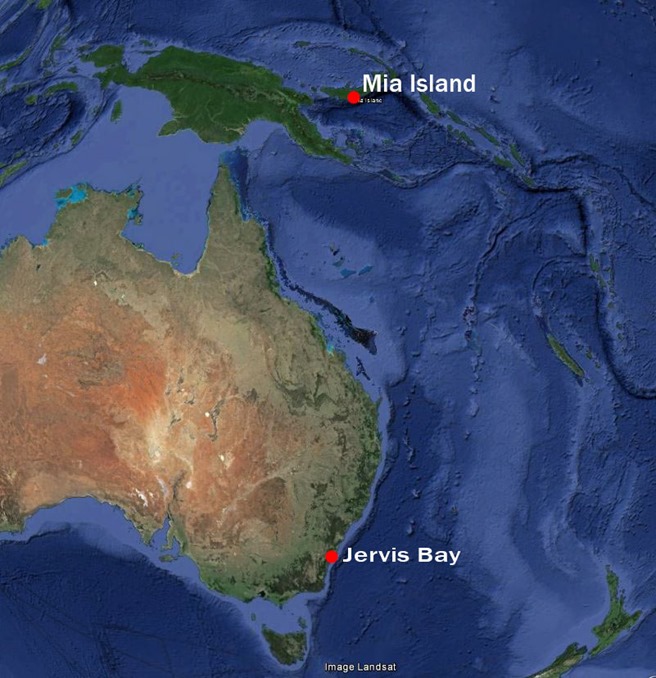 | |||
 So far from where she was built. So far from where she was built. | |||
| February 7th – Brisbane Courier | |||
| By the 7th February 1917 it was confirmed by the Marine Department that the Misima was a total wreck on East Cape Papua. Owned by Burns Phillip and Co., Ltd., and contracted to the Government for the Territory in the Papuan coastal service, she was a regular visitor to Thursday Island. | |||
| Marine Enquiry findings. | |||
| After investigation the court found that no blame could be attached to anybody, and that the master and crew took all proper precautions, and made every effort to save the vessel. | |||
12 August 2015
The Tomerong Poem
| I found this poem in the “Shoalhaven Telegraph 1934”. - Despite the authors obvious dissatisfaction with those making the decisions in 1934, the benefit of the author putting pen to paper is the information it contains about conditions prevailing at the time. | |||
| |||
 A very early photograph of St Georges Basin. A very early photograph of St Georges Basin. | |||
| | |||
11 August 2015
Tomerong memories
| Albury Banner and Wodonga Express. 1929 |
| Small articles like the one below speak to us from a different time. |
| A Launching Place |
| Dear Uncle Jeff, – There was a motor boat launched today at Huskisson. We saw a large vessel launched there at one time. We will soon be having our Sunday School Picnic, and it is a day we all look forward to. Daddy is getting a Rexonola and records, as our other gramophone in about worn out. Our little bantam has some dear little chickens. Last time mummy set her on three duck eggs, but she soon tired of the ducklings, for they did not seem to understand her language and would run into the water when she would try and warn them off it. – Your fond niece, “Heather Bell.” |
| (The ducklings” natural love of water must have been very puzzling to the foster mother, Eileen.) |
| Rexonola – was Australia’s first talking machine, – 1912 – 1930. Below is an advertisement for the 1929 model. |
 |
6 August 2015
Loss of the Spec - Gerringong
| You would think the loss of a large sailing ship and some of it’s crew members would attract a great deal off attention in the city press of the day, but in many cases the reporting of the tragedy would only be a few lines added to the shipping column of the Sydney papers… |
 |
| The Kiama Independent and Shoalhaven Advertiser 1865 |
| It is with the greatest regret that we find ourselves called upon this week to publish the particulars of the loss of the schooner Spec off the coast in our immediate neighbourhood, and the death of the skipper and one of the two seamen who were employed on board. |
| Spec Schooner – 17 tons, 13.1 meters in length – 3.5m meters beam – 1.6 meter in depth, Owned by G. Robertson Nicoll, built 1865 – Registered at Sydney. |
3 August 2015
HMAS Creswell.
| Inside history | ||||
| Following on from the previous post about the fascinating story of the missing bell that at one time sounded navy time across the parade ground called the “Quarterdeck” at HMAS Creswell, I had the unique opportunity of being given a guided tour of HMAS Creswell’s history museum and to climb the ladders to the top of the bell tower. | ||||
| ||||
| The Museum. An image of the first group of 13 year old navy cadets to be trained at the base and their accompanying service history makes compelling reading. | ||||
| ||||
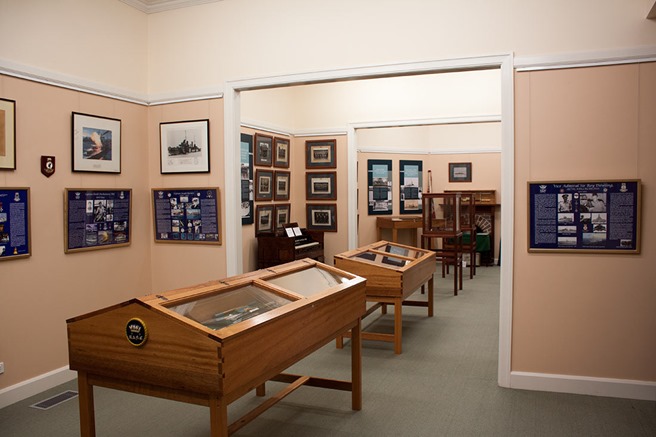 | ||||
| The Clock Tower Building. | ||||
| ||||
| The clock tower was constructed at the same time as the rest of the buildings, recently renovated and looking fantastic, inside the building you find a large open space that was used as a gymnasium, beautiful hardwood polished floors, high ceilings and exposed steel trusses overhead. | ||||
 Born in Bournmouth England in 1923 Peter joined the Royal Navy and served as a Petty Officer in the Fleet Air Arm. He came to Australia in 1952 settling in the Shoalhaven. | ||||
| ||||
| Inside the Bell Tower | ||||
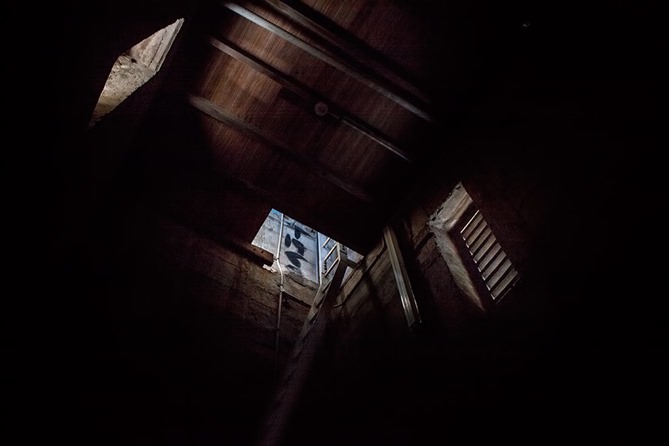 | ||||
| Connected by a series of narrow steep ladders, the first climb brings you out into a dark empty room, once your eyes adjust, the first thing you notice is the walls are covered with names and dates, the markings are from trainees at the base who over many years, broke into the tower and signed their names on the walls, it was seen as a challenge and quite an achievement to get your name on the walls, some date back into the 40’s. | ||||
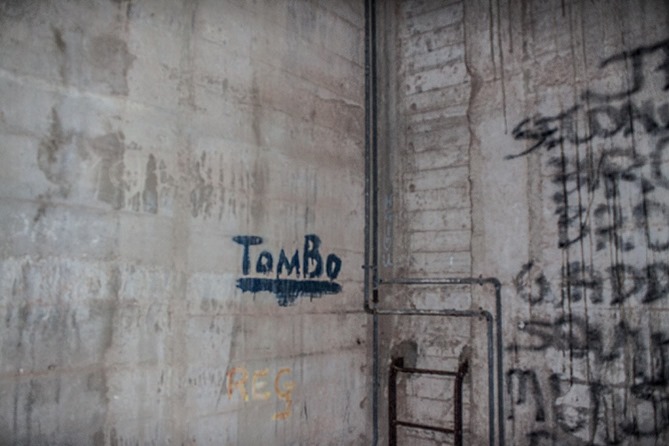 | ||||
|
| ||||
 | ||||
| This floor houses the fascinating and unique mechanism that drives the bell and clock and keeps it on time. Originally driven by a weighted pendulum the mechanism has been updated and now runs on small electric motors. There are two wires connecting this device to the floor above. | ||||
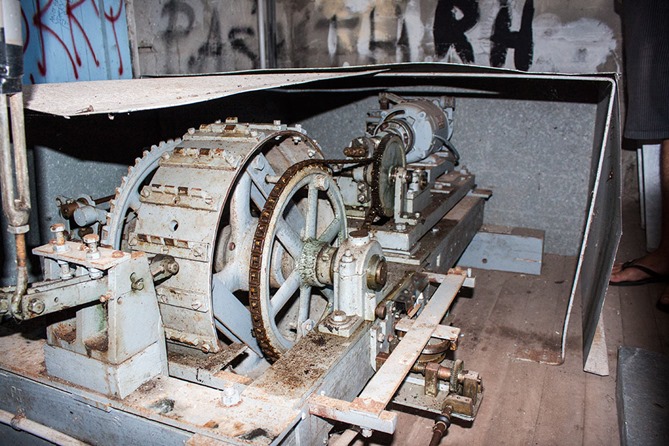 | ||||
| After another steep climb you finally reach the top of the tower, this room is bathed soft light, the light comes via the two large translucent clock faces that flank both sides of the room, the first thing you see is another fascinating piece of machinery with a swinging pendulum and moving gears, simple in design but puzzling to watch, how they worked this device out is beyond me, the wires from the floor below connect the two devices and then go vertically to the bell sticking out through the roof above, there you see two large steel hammers ready to be drawn back at the appropriate time and ring the bell. | ||||
| ||||
| Each floor features more names and dates and they make interesting reading, there was some discussion about covering the signatures, but they have become part of the towers history, describing many of the past students and their adventurous spirit. | ||||
| The original Bell. | ||||
| ||||
| The original bell is housed in the foyer of the museum. You can read more about the bells history, disappearance and it’s rediscovery here – Continue reading. | ||||
|
| ||||











